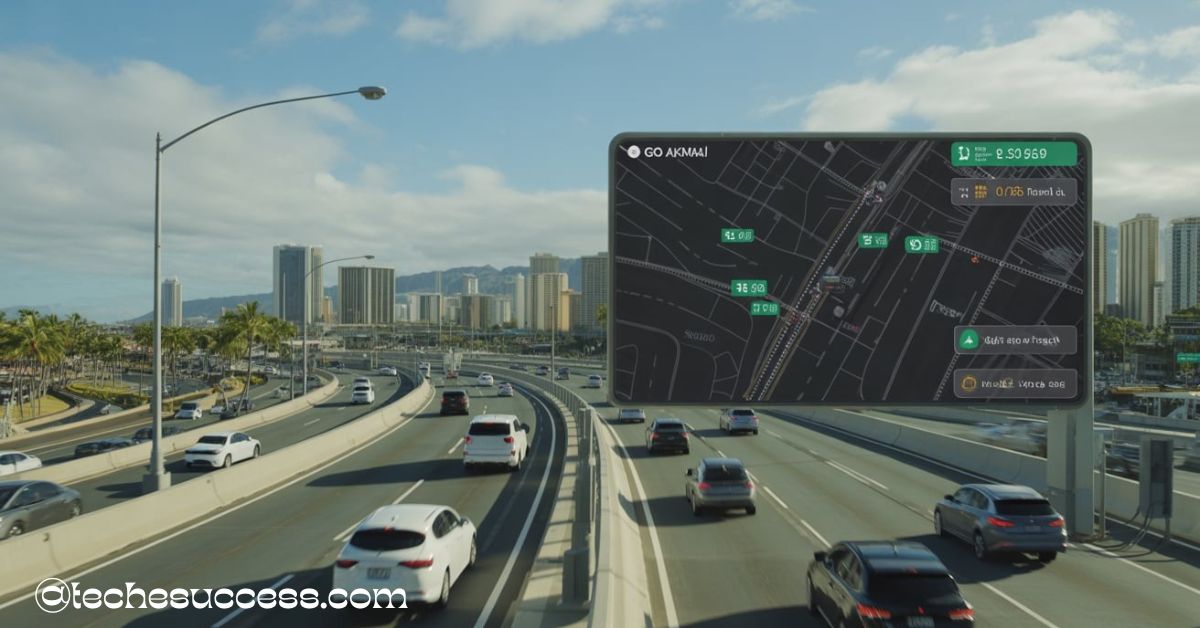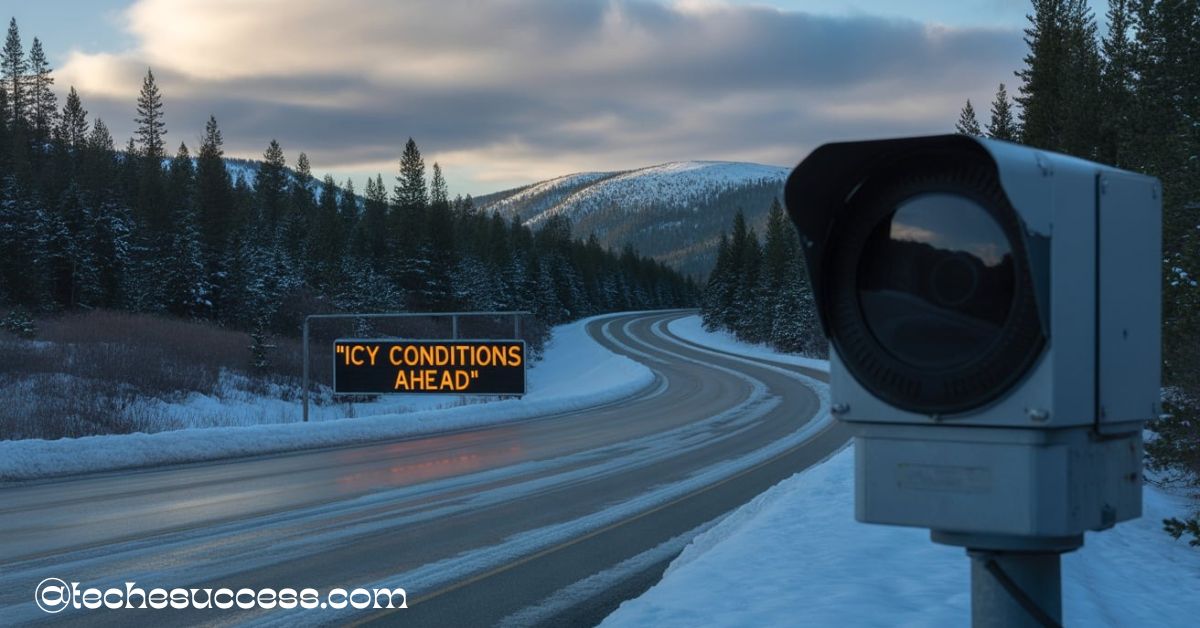AI cameras on highways use advanced technology to monitor traffic, detect violations, and improve road safety. These smart systems track speed, behavior, and congestion in real time. Their goal is to reduce accidents and keep Alabama’s highways safer for everyone.
“Stay tuned with us as we dive deeper into AI cameras on highways. We’ll bring you the latest updates, insights, and real-time developments on how these smart systems are transforming road safety across the state.”
What Are AI Cameras on Alabama Highways?
AI traffic cameras are advanced traffic monitoring systems that use Artificial Intelligence and computer vision to analyze what they see on the road. Unlike standard cameras that only record video, these systems can identify vehicles, detect violations, and understand traffic conditions in real time.
On Alabama highways, AI traffic cameras are being deployed to watch over high-traffic areas and problem zones. They can track vehicle speed, lane changes, tailgating, and even distracted driving behaviors like phone use or not wearing seatbelts.
They also collect traffic flow data to help the Alabama Department of Transportation (ALDOT) plan future improvements. By learning patterns from large amounts of footage, the cameras can predict where accidents are more likely to happen and alert authorities ahead of time.
In short, these Alabama highway cameras combine video recording with real-time analysis, which makes them much more capable than old fixed cameras used just for snapshots or speed traps.
Where Are AI Cameras Being Installed in Alabama?
AI camera deployment in Alabama has begun in selected zones, especially areas with heavy traffic and frequent accidents. Some of the first notable projects have appeared in Gulf Shores, where A.I. cameras in Alabama were added to intersections to track near-miss incidents and pedestrian crossings.
Plans are also in motion for installations on major highways passing through Limestone County and Morgan County, two high-traffic regions. ALDOT has confirmed upcoming cameras on interstate corridors in these stretches to support broader statewide monitoring.
Smaller cities like Midfield have adopted local ordinances allowing automated photographic enforcement, which may soon integrate with Flock camera systems for license plate tracking. Over time, more county-level road networks are expected to add these systems, especially where crash data shows recurring danger spots.
The rollout is gradual, but the long-term vision is to cover critical highway corridors and urban intersections across the state, building a connected network of Alabama highway cameras on the road.
How AI Cameras Work on Alabama Highways
AI traffic cameras on Alabama highways work by combining high-definition lenses with intelligent software. They constantly capture video, and AI algorithms process it in real time.
These systems can recognize vehicle types, read license plates, and detect unusual or dangerous movements. For example, if a car suddenly swerves or stops, the system flags it instantly. They also measure vehicle speed without relying solely on radar by calculating the time it takes for a car to pass between two points in the frame.
Orange cameras on Highway sections have been seen during pilot testing phases, where temporary mounts are used to study driver behavior before permanent installations.
AI cameras also integrate with existing traffic lights and sensors. They communicate data about traffic density, congestion buildup, or near-collision events. This lets ALDOT adjust signal timing to prevent backups and reduce crash risk.
What makes them powerful is their ability to learn. The more footage they process, the better they get at spotting risky patterns. This constant improvement gives traffic authorities a new level of insight into how cameras on interstate highways operate day to day.
Goals Behind Installing AI Cameras in Alabama
The main reason Alabama is installing AI traffic cameras is to improve safety on its highways. Crash rates, especially on busy corridors, have remained high in recent years. AI systems offer a proactive way to spot problems before they lead to accidents.
These cameras also aim to help enforce traffic laws more fairly. With precise detection, they reduce the chance of human error in issuing tickets. They can automatically flag speeding, reckless driving, or illegal lane changes on busy stretches like Highway 7 AI cameras sites under planning.
Data gathered from these cameras also supports long-term infrastructure planning. ALDOT uses the information to redesign intersections, adjust speed limits, and schedule road maintenance based on actual traffic patterns.
In short, the goal isn’t just enforcement—it’s prevention. The A.I. cameras in Alabama are designed to make the roads safer for everyone who uses them.
Impact of AI Cameras on Road Safety and Traffic Flow
So far, early data suggests that AI cameras on Alabama highways are already improving road safety. Pilot programs in cities like Gulf Shores have shown a drop in red-light violations and near-collision incidents after AI systems were introduced.
By discouraging risky behavior, AI traffic cameras are helping smooth traffic flow. When drivers know they’re being monitored, they’re less likely to speed or make sudden lane changes. This reduces bottlenecks and creates steadier traffic movement, especially on cameras on interstate routes where congestion is a daily challenge.
AI analysis also helps predict and prevent crashes. If a stretch of road shows rising near-miss events, ALDOT can intervene before accidents happen—by adding signage, altering light timing, or deploying extra patrols.
This proactive role marks a big shift from old systems that only recorded accidents after they occurred.
Legal Framework for AI Cameras on Alabama Highways
The legal side of AI cameras on Alabama highways is still evolving. Alabama law currently allows photographic traffic enforcement in certain municipalities, but using AI adds new layers that must be addressed.
Cities like Midfield have passed ordinances to allow A.I. cameras in Alabama to issue civil penalties for violations. However, statewide legislation is being discussed to standardize how evidence from these systems can be used in court.
ALDOT is also drafting policies for handling data, ensuring that footage from Alabama highway cameras is stored securely and used only for traffic management or enforcement—not unrelated surveillance.
Clear legal rules are essential to protect both driver rights and the effectiveness of the system. Lawmakers are working to balance safety benefits with privacy and due process.
Privacy Concerns Around AI Cameras in Alabama
With every new technology comes public concern, and AI traffic cameras are no exception. Some drivers worry that Flock camera systems and other license plate readers might track them without consent.
Privacy advocates argue that without strict rules, A.I. cameras in Alabama could collect too much personal data, such as driver identities or travel habits.
To address this, ALDOT has said that data from Alabama highway cameras will only be used for traffic safety and not for unrelated investigations. Most video is also expected to be deleted after a short retention period unless flagged for violations.
Maintaining transparency and setting clear data use limits will be crucial for earning public trust in this technology.
Public Response to AI Cameras on Alabama Highways
Public opinion about AI cameras on Alabama highways is mixed. Many residents support the idea if it leads to fewer accidents and safer roads. Parents and daily commuters especially welcome efforts to reduce reckless driving.
Others worry about misuse or overreach. News about AI traffic cameras hacked down in other states has made some Alabama drivers question how secure the systems will be.
Local officials are trying to build trust by holding community meetings, publishing data on crash reductions, and showing how the orange cameras on highway test units are used purely for safety evaluation.
This ongoing dialogue between agencies and the public will shape how widely these systems are accepted.
Cost and Funding of AI Camera Projects in Alabama
Installing AI traffic cameras isn’t cheap. Each system involves high-resolution cameras, processing hardware, software licensing, and network connections.
Early estimates suggest each intersection could cost several hundred thousand dollars. Funding has come from state safety grants, federal infrastructure programs, and local budgets.
Flock camera units, which are being used for license plate tracking, are often leased on subscription models, making them more affordable for smaller towns.
ALDOT has said the long-term cost will be balanced by savings from fewer crashes, less congestion, and reduced need for manual traffic enforcement.
AI Cameras vs Traditional Traffic Cameras in Alabama
AI cameras on Alabama highways are a big leap from traditional systems. Older cameras simply recorded footage or took snapshots of speeding vehicles. They couldn’t analyze behavior or warn authorities about danger before it happened.
AI traffic cameras can do real-time analysis, detect multiple types of violations, and even predict accidents before they occur.
Highway 7 AI cameras planned for pilot projects are expected to show how advanced analytics reduce crashes faster than older tools ever could.
This predictive power is what makes AI systems so promising for the future of Alabama highway cameras.
Future Plans for AI Cameras on Alabama Highways
The future of AI cameras on Alabama highways involves expanding coverage across more cities, highways, and interstates. ALDOT has announced plans to add dozens more systems over the next few years, focusing on high-risk corridors and school zones.
More advanced features are also expected, such as automated incident alerts sent directly to first responders. Future systems may even link to connected vehicle technology, warning cars in real time if a crash is likely ahead.
As more A.I. cameras in Alabama come online, their data could shape traffic design, reduce congestion, and make roads significantly safer for millions of drivers.
Conclusion: Are AI Cameras the Future of Alabama’s Highways?
AI cameras on Alabama highways are still new, but they’re already showing potential to change how the state manages traffic and safety. By spotting risks early, guiding traffic flow, and helping enforce laws fairly, they could make Alabama’s roads safer and more efficient.
While there are still concerns about cost, privacy, and legal frameworks, steady progress and open communication can help overcome these challenges.
If used responsibly, these AI traffic cameras could become a cornerstone of Alabama’s future highway system.
FAQs About AI Cameras on Alabama Highways
1:Are AI cameras legal on Alabama highways?
Yes. Some cities allow automated enforcement using A.I. cameras in Alabama, and statewide standards are being developed to regulate their use.
2:What do AI cameras monitor on highways?
AI traffic cameras monitor speeding, lane changes, crashes, congestion, and other safety risks on cameras on interstate routes and local roads.
3:Do AI cameras issue speeding tickets in Alabama?
Yes. Many Alabama highway cameras are approved to automatically flag speeding violations and send tickets after review by authorities.
4:How is data from AI cameras used or stored?
Data from Flock camera and other systems is used only for traffic safety. Most footage is deleted within days unless flagged for enforcement.
5:Which Alabama counties are planning more AI camera installations?
Highway 7 AI cameras are planned in upcoming projects, with new systems also coming to Limestone County and Morgan County corridors.
Also Read:













Leave a Reply